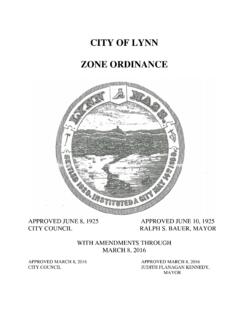Transcription of June 2018 Level 3 National in 31588H Principles of …
1 1 L3 Lead Examiner Report 1806 june 2018 Level 3 National in 31588H Principles of Management 2 Edexcel and BTEC Qualifications Edexcel and BTEC qualifications come from Pearson, the world s leading learning company. We provide a wide range of qualifications including academic, vocational, occupational and specific programmes for employers. For further information visit our qualifications website at for our BTEC qualifications. Alternatively, you can get in touch with us using the details on our contact us page at If you have any subject specific questions about this specification that require the help of a subject specialist, you can speak directly to the subject team at Pearson. Their contact details can be found on this link: You can also use our online Ask the Expert service at You will need an Edexcel Online username and password to access this service.
2 Pearson: helping people progress, everywhere Our aim is to help everyone progress in their lives through education. We believe in every kind of learning, for all kinds of people, wherever they are in the world. We ve been involved in education for over 150 years, and by working across 70 countries, in 100 languages, we have built an international reputation for our commitment to high standards and raising achievement through innovation in education. Find out more about how we can help you and your learners at: june 2018 Publications Code 31588H_1806_ER All the material in this publication is copyright Pearson Education Ltd 2018 3 grade boundaries What is a grade boundary? A grade boundary is where we set the Level of achievement required to obtain a certain grade for the externally assessed unit.
3 We set grade boundaries for each grade , at Distinction, Merit, Pass and Near Pass. Setting grade boundaries When we set grade boundaries , we look at the performance of every learner who took the external assessment. When we can see the full picture of performance, our experts are then able to decide where best to place the grade boundaries this means that they decide what the lowest possible mark is for a particular grade . When our experts set the grade boundaries , they make sure that learners receive grades which reflect their ability. Awarding grade boundaries is conducted to ensure learners achieve the grade they deserve to achieve, irrespective of variation in the external assessment. Variations in external assessments Each external assessment we set asks different questions and may assess different parts of the unit content outlined in the specification.
4 It would be unfair to learners if we set the same grade boundaries for each assessment, because then it would not take accessibility into account. grade boundaries for this, and all other papers, are on the website via this link: Unit 6: Principles of Management Level 3 P M grade Unclassified N P M D Boundary Mark 0 16 32 51 70 4 Introduction Unit 31588H Principles of Management is a Mandatory unit in the Diploma and Extended Diploma in Business and the Extended Diploma in Enterprise and Entrepreneurship. This was the second opportunity for learners to take the external assessment set task for this unit. The assessment is based on a case study that is issued in Part A pre-release one week before the supervised assessment. Part B contains the two activities set on the case study and is issued at the start of the supervised assessment.
5 The pre- release period enables learners time to identify and understand the issues that the company s management have to face. It gives the learner the opportunity to familiarize themselves with the issues, the organisation, and the relevant sector. The Part A pre-release case study involved a medium sized manufacturing company, Strines Stoves Ltd, with sector and organisation information. The case study also included benchmarking information relating to Jaguar Land Rover Automotive plc s manufacturing strategy and Aldi s use of lean management in its business operations. There are two activities in Part B. Activity 1 required learners to prepare a report on quality management and its importance to Strines Stoves Ltd. It also required the learner to make recommendations about appropriate techniques or tools that the company could use for quality management.
6 Activity 2, a presentation, focused on how the current management approach at Strines Stoves Ltd is affecting the development of a quality culture. It also required the learner to consider how the company could achieve a quality management standard. The assessment of the unit is based on 4 assessment focuses which are applied twice, once to the written report and once to the presentation. Each activity is marked out of 44 marks, giving a total of 88 marks for the set task. The assessment focuses are: Information/ data analysis and interpretation 12 marks Key Principles of management 12 marks Suggested alternative management approaches 12 marks Structure and presentation 8 marks Learners completed the assessment using a computer. Scripts were submitted as print outs or electronically on a USB memory stick.
7 A small number of centres submitted work without including signed authentication sheets and/or mark summary sheets. Centres are advised to review the administration guide for this unit which is available on the BTEC subject pages prior to submitting work to ensure that all administrative requirements are met. 5 Introduction to the Overall Performance of the Unit Learners attempting this set task achieved between 0 and 85 marks out of the 88 available. Learners took different approaches to the assessment. The majority of learners answered the two activities and produced a written report on quality management and a presentation on quality culture and quality standards. However, some learners took an incorrect approach; having completed activity 1 they then produced a synopsis of that activity as a presentation.
8 This meant that most of the marks for activity 2 were not available to these learners. Learners who gave detailed speaker s notes on quality culture but did not address quality standards were limited to the top of mark band 2 across the assessment focuses. Many learners completed activity 1 using a word processing package such as Word and presentation software, such as PowerPoint, for activity 2. A small number of learners produced a presentation using word processing software whilst others, having produced slides in presentation software, word processed their speaker s notes. Some learners submitted only their speaker s notes/script. This limited achievement on assessment focus 8. A very small number of learners only attempted activity 1. Most learners had made an attempt to answer both activities.
9 The majority of learners did limit their answers to quality management, quality culture and quality standards. However, a number did try to include training and development, human resource planning and change management and wasted valuable time in writing about these topics. There were some opportunities for learners to apply their knowledge and understanding of motivation and leadership styles in both activities, but these were underlying issues and not major themes. A major issue across both activities was that learners failed to apply their knowledge to the organisation and sector in the case study. Many learners spent a lot of time copying out the case study into their answers but then not exploring it in relation to the activities. Some learners re-iterated case study information and data, and commented on the issues they found without analysing the information in relation to the topics in the activities.
10 Some learners incorrectly wrote about Strines Stoves Ltd as a retail company, others incorrectly identified it as an automotive manufacturing company in competition in Jaguar Land Rover Automotive plc. 6 Learners from some centres spent time producing a front cover to their report, and others produced Contents pages. This did not add to the marks for assessment focus 4, Structure/ presentation. It was evident that learners were better prepared to take the set task in the june window as opposed to the entry in the January window. 7 Activity 1 Assessment Focus 1: Information/ data analysis and interpretation The quality of the answers in this assessment focus varied in depth and relevance. When it was done well, the links to the case study were good and made sense and a number of learners did use the information effectively, however, context sometimes was an issue.














